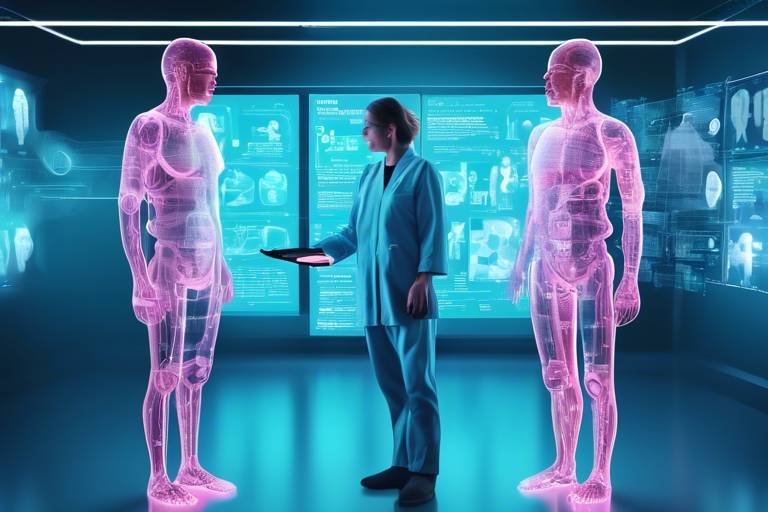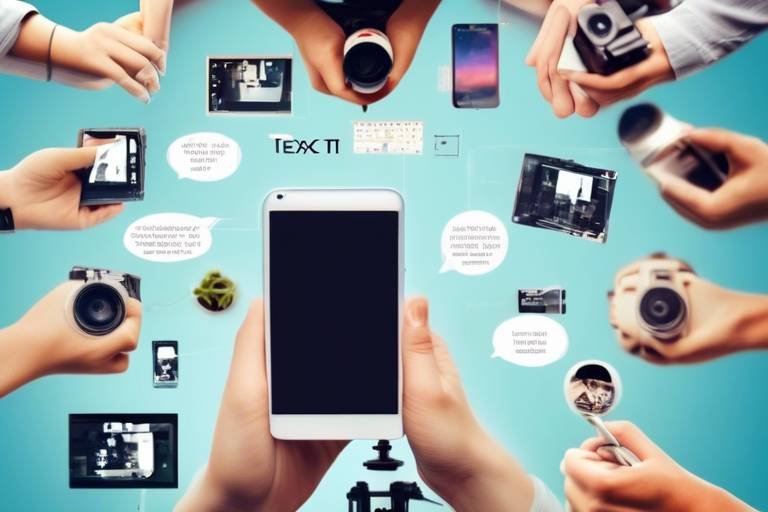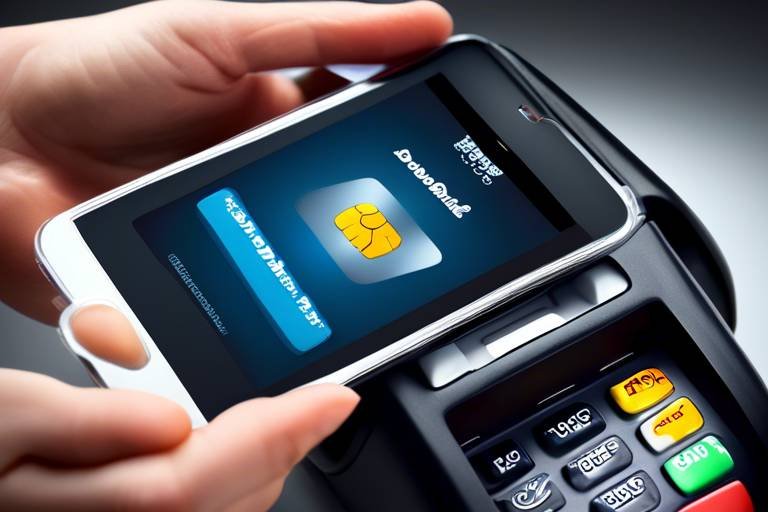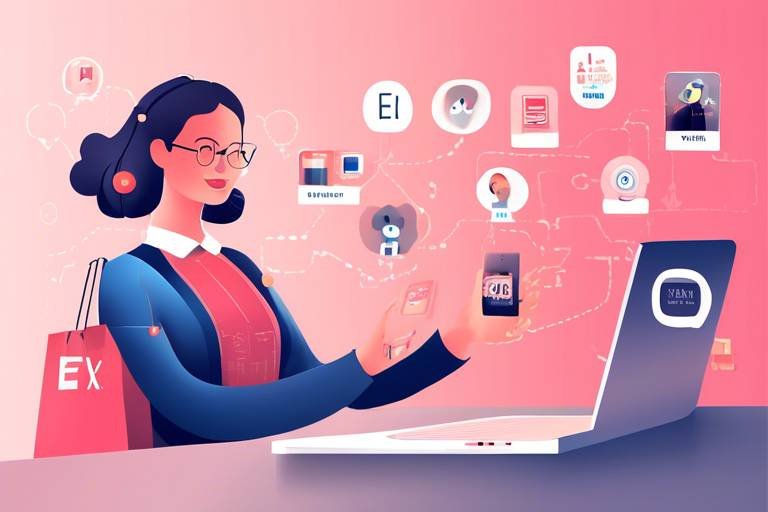The Future of Digital Twins in Healthcare
In today's rapidly evolving healthcare landscape, the concept of digital twins is emerging as a game-changer. Imagine a world where every patient has a virtual twin—a digital representation that mirrors their health status in real-time. This isn't just a futuristic fantasy; it's becoming a reality. Digital twins have the potential to transform patient care by providing healthcare professionals with invaluable insights into individual health conditions. But what exactly does this mean for the future of healthcare?
As we explore the transformative potential of digital twins, we uncover a wealth of applications that can significantly enhance patient outcomes. From personalized treatment plans tailored to the unique needs of each individual to predictive analytics that can foresee health issues before they arise, the implications are profound. Moreover, as we delve deeper into this topic, we will also address the challenges that come with implementing such advanced technologies, including data privacy concerns and integration with existing healthcare systems.
The future of digital twins in healthcare looks bright, with advancements in artificial intelligence (AI) and machine learning paving the way for even more innovative applications. These technologies will not only enhance predictive capabilities but also revolutionize personalized medicine, making healthcare more effective and accessible for everyone. So, buckle up as we embark on this exciting journey to explore how digital twins are set to reshape the healthcare sector!
Digital twins are virtual replicas of physical entities, which can be anything from a simple device to a complex human body. At their core, they leverage real-time data to create a dynamic model that reflects the current state of the physical entity. In healthcare, this means that a digital twin can continuously monitor a patient’s health metrics, providing a comprehensive view of their well-being.
The technology behind digital twins involves advanced data analytics, Internet of Things (IoT) sensors, and machine learning algorithms. These components work together to collect, analyze, and visualize data, allowing healthcare providers to make informed decisions based on accurate and up-to-date information. As we delve deeper into the applications of digital twins in patient care, it becomes clear that their potential is vast and varied.
Digital twins can significantly enhance patient care by simulating individual health conditions. This capability allows for the creation of personalized treatment plans that take into account a patient's unique health profile. Imagine a scenario where a doctor can visualize how a specific medication will affect a patient based on their digital twin—this is not just a dream; it's becoming a reality.
One of the most exciting aspects of digital twins is their ability to harness predictive analytics. By analyzing a wealth of data, healthcare providers can foresee potential health issues before they manifest. This proactive approach enables timely interventions, which can be life-saving. For instance, consider a patient with a history of heart disease; their digital twin can help predict when they might experience a cardiac event, allowing doctors to intervene early.
Digital twins facilitate comprehensive risk assessments by continuously analyzing patient data over time. By identifying trends and patterns, healthcare providers can pinpoint individuals at risk of developing serious health conditions. This targeted approach allows for tailored preventive measures, ensuring that patients receive the care they need before problems escalate.
Another remarkable feature of digital twins is their ability to optimize treatment plans. By simulating various treatment scenarios, healthcare providers can evaluate the efficacy of different approaches before implementing them. For example, a case study might reveal how a particular treatment regimen could be adjusted to enhance its effectiveness for a specific patient, ultimately leading to better health outcomes.
In an increasingly digital world, remote patient monitoring is becoming essential. Digital twins enhance these systems by providing real-time insights into a patient's health status. This capability is particularly beneficial in the realm of telehealth, where healthcare providers can deliver care efficiently from a distance. Imagine a world where a doctor can monitor a patient's recovery from surgery without needing them to visit the clinic—this is the power of digital twins in action.
Despite their potential, digital twins face several challenges in the healthcare sector. One of the most pressing issues is data privacy. Maintaining patient confidentiality is crucial when utilizing digital twins, as they often rely on sensitive health information. This raises ethical implications and regulatory challenges that must be addressed to ensure patient trust and compliance with healthcare regulations.
As digital twins become more integrated into healthcare, the importance of safeguarding patient data cannot be overstated. Healthcare providers must navigate a complex landscape of regulations, ensuring that patient information is protected while still allowing for the benefits of digital twin technology. This balance is essential for fostering trust between patients and healthcare providers.
Integrating digital twins into current healthcare infrastructures can be a daunting task. The technical hurdles involved in implementing these advanced systems require careful planning and execution. However, with the right strategies and solutions, healthcare organizations can successfully incorporate digital twins into their practices, paving the way for a more efficient and effective healthcare delivery model.
The future of digital twins in healthcare is promising, with numerous emerging trends on the horizon. Advancements in AI and machine learning are set to enhance the capabilities of digital twins, making them even more valuable tools for healthcare providers. These technologies will not only improve predictive analytics but also facilitate a revolution in personalized medicine.
Integrating AI and machine learning with digital twins can significantly enhance their predictive capabilities. By analyzing vast amounts of data, these technologies can identify patterns that humans might overlook, leading to more accurate predictions and improved patient outcomes. Imagine a healthcare system where treatments are tailored to the individual based on real-time data and predictive analytics—this is the future we are heading towards.
Digital twins are poised to revolutionize personalized medicine by tailoring treatments to individual patients. This innovative approach ensures that healthcare solutions are not one-size-fits-all but rather customized to meet the unique needs of each patient. As we move forward, the integration of digital twins into healthcare will pave the way for more effective treatments and improved patient satisfaction.
- What are digital twins in healthcare? Digital twins are virtual replicas of patients that use real-time data to monitor health and predict outcomes.
- How do digital twins improve patient care? They provide personalized treatment plans, predictive analytics, and better risk assessments.
- What challenges do digital twins face? Key challenges include data privacy concerns and the integration with existing healthcare systems.
- What is the future of digital twins in healthcare? The future includes advancements in AI and machine learning, leading to more personalized medicine and improved patient outcomes.

Understanding Digital Twins
Digital twins are not just a buzzword; they are a revolutionary concept that is reshaping various industries, especially healthcare. Imagine having a virtual replica of a physical entity, such as a patient, that can simulate its behavior and predict its future states. This is precisely what digital twins do. They leverage real-time data and advanced algorithms to create a dynamic model that mirrors the physical counterpart. In healthcare, this means that doctors can visualize a patient’s health in a way that was previously unimaginable, allowing for more informed decision-making and tailored treatment plans.
The technology behind digital twins is multifaceted, incorporating elements of the Internet of Things (IoT), artificial intelligence (AI), and big data analytics. By harnessing data from various sources, including wearable devices, electronic health records (EHRs), and even genetic information, digital twins can provide a comprehensive view of a patient’s health status. This integration of data not only enhances the understanding of individual health but also opens doors to predictive modeling, which can foresee potential health issues before they become critical.
To put it simply, think of a digital twin as a healthcare crystal ball. It doesn’t just show you what’s happening now; it helps you foresee what could happen in the future based on current trends and data. This capability is incredibly powerful in a field where timely interventions can mean the difference between life and death.
The applications of digital twins extend beyond just individual patients. They can also be utilized in population health management, where aggregated data from multiple digital twins can inform public health strategies and resource allocation. For instance, healthcare providers can analyze trends in chronic diseases across different demographics and tailor preventive measures accordingly. This not only improves patient outcomes but also enhances the efficiency of healthcare systems.
In summary, the concept of digital twins is transforming healthcare by providing a holistic view of patient health and enabling personalized treatment approaches. As we delve deeper into the applications of digital twins in patient care, it becomes clear that this technology has the potential to revolutionize how we approach health and wellness.
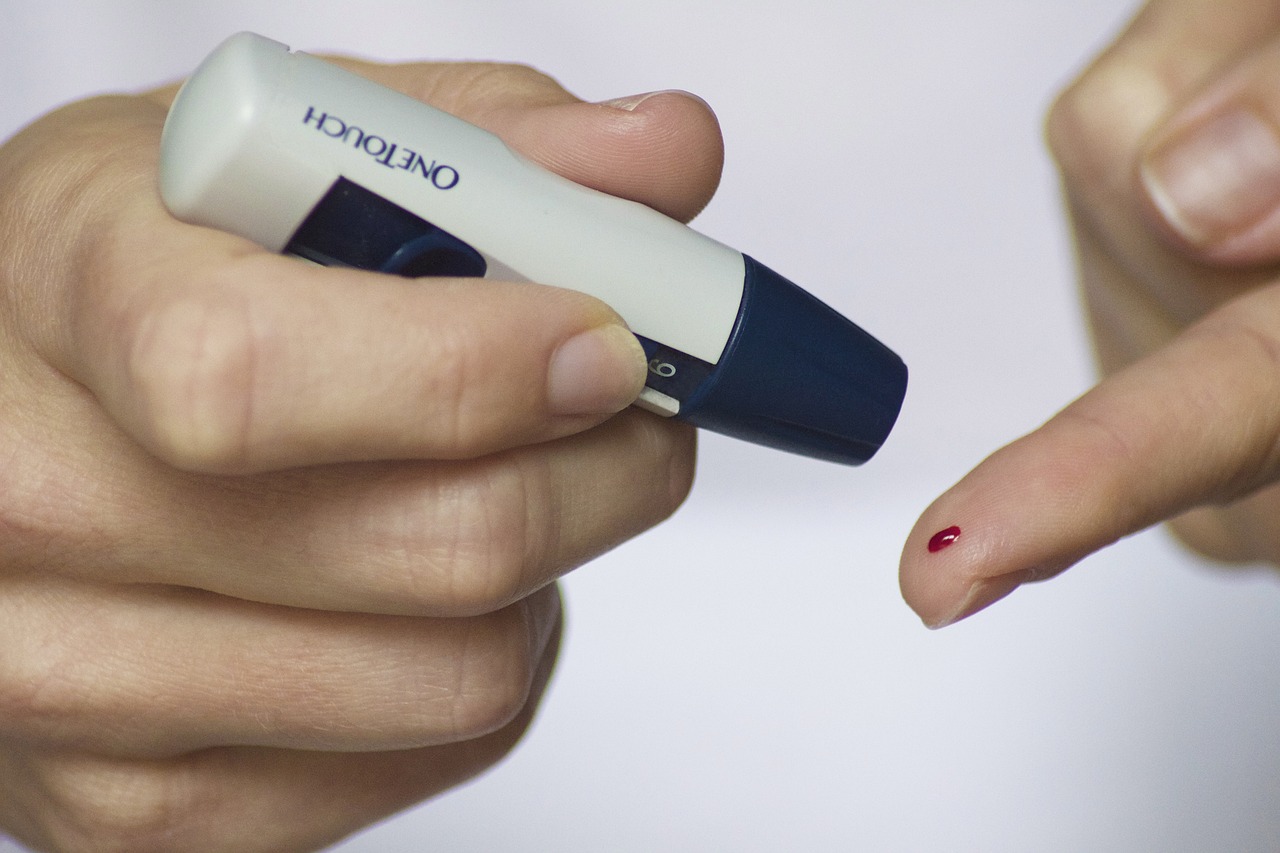
Applications in Patient Care
Digital twins are not just a buzzword; they are revolutionizing the way we approach patient care. Imagine having a virtual replica of a patient that mirrors their health status in real-time. This technology enables healthcare providers to create personalized treatment plans tailored to the unique needs of each individual. By simulating health conditions, digital twins allow clinicians to visualize potential outcomes before making critical decisions. It’s like having a crystal ball for health—offering insights that can lead to better patient outcomes.
One of the most exciting aspects of digital twins is their ability to enhance predictive analytics. With the integration of vast amounts of patient data, healthcare professionals can foresee potential health issues before they become critical. This proactive approach not only improves patient safety but also optimizes resource allocation. For instance, if a digital twin indicates that a patient is at risk of developing a chronic illness, healthcare providers can intervene early, potentially preventing the disease from progressing. This kind of foresight is invaluable in today’s fast-paced medical environment.
Predictive analytics powered by digital twins is a game-changer. By utilizing advanced data modeling techniques, healthcare providers can analyze trends and patterns in patient data over time. This allows them to anticipate health crises and implement preventive measures. For example, consider a patient with a history of heart issues. Their digital twin can analyze factors like blood pressure, cholesterol levels, and lifestyle choices to predict when they might face a heart-related event. With this information, doctors can craft a tailored intervention plan that might include lifestyle changes, medication adjustments, or regular monitoring.
Digital twins facilitate comprehensive risk assessments by continuously analyzing patient data. This ongoing evaluation helps identify patients who may be at risk for various conditions. Imagine a scenario where a digital twin recognizes a pattern indicating that a patient is likely to experience a diabetic episode. Armed with this knowledge, healthcare providers can tailor preventive measures, such as dietary adjustments or increased monitoring, to mitigate risks. This level of personalized care is not just innovative; it's essential for improving long-term health outcomes.
When it comes to treatment, digital twins can optimize therapeutic approaches by simulating various scenarios. For instance, a patient undergoing cancer treatment can have their digital twin modeled to assess how they might respond to different chemotherapy regimens. This technology allows oncologists to choose the most effective treatment plan based on real-time data and predicted responses, leading to improved efficacy and fewer side effects. Case studies have shown that hospitals employing digital twin technology have seen remarkable improvements in patient recovery times and overall satisfaction.
In an age where remote healthcare is becoming the norm, digital twins play a crucial role in enhancing remote patient monitoring systems. They enable healthcare providers to deliver care efficiently from a distance, ensuring that patients receive the attention they need without the hassle of frequent hospital visits. With digital twins, doctors can continuously monitor vital signs, medication adherence, and lifestyle changes, all from the comfort of their own homes. This not only improves patient engagement but also fosters a sense of autonomy, as patients become active participants in their health management.
In summary, the applications of digital twins in patient care are vast and varied. From predictive analytics to remote monitoring, this technology is paving the way for a more personalized and efficient healthcare system. As we continue to explore the potential of digital twins, the future of patient care looks brighter than ever.
- What are digital twins? Digital twins are virtual replicas of physical entities, such as patients, that allow healthcare providers to simulate and analyze health conditions in real-time.
- How do digital twins improve patient care? They enhance personalized treatment plans, enable predictive analytics, and facilitate remote monitoring, leading to better health outcomes.
- What challenges do digital twins face in healthcare? Challenges include data privacy concerns, integration with existing systems, and the need for standardized protocols.

Predictive Analytics
Predictive analytics is a game-changer in the healthcare landscape, and when paired with digital twins, it becomes a powerful tool for anticipating health issues before they arise. Imagine having a virtual model of your body that not only reflects your current health status but also predicts how you might respond to various treatments or lifestyle changes. This is the essence of predictive analytics in the realm of digital twins. By leveraging vast amounts of data—from medical history to real-time health metrics—healthcare providers can create simulations that forecast potential outcomes. This proactive approach not only enhances patient care but also optimizes resource allocation within healthcare systems.
One of the most intriguing aspects of predictive analytics is its ability to identify trends and patterns that may not be immediately visible to the naked eye. For instance, by analyzing data from multiple patients over time, healthcare professionals can spot early warning signs of diseases such as diabetes or heart conditions. This capability allows for interventions that can significantly alter a patient's health trajectory. For example, if a digital twin indicates a rising trend in blood pressure, doctors can take preventive measures before the patient develops hypertension, potentially avoiding more severe complications down the line.
To illustrate this concept further, consider the following table that outlines how predictive analytics can impact various health outcomes:
| Health Condition | Predictive Analytics Application | Potential Outcome |
|---|---|---|
| Diabetes | Monitoring glucose levels and lifestyle factors | Early intervention to prevent onset |
| Heart Disease | Identifying risk factors through patient history | Customized prevention plans |
| Respiratory Issues | Analyzing environmental triggers and patient data | Improved management of chronic conditions |
Moreover, the integration of predictive analytics with digital twins allows for continuous monitoring of patients, which is particularly beneficial for those with chronic illnesses. By utilizing sensors and wearable technology, healthcare providers can gather real-time data and feed it into the digital twin model. This ongoing data stream enables a dynamic analysis of the patient's health, allowing for timely adjustments to treatment plans based on the latest information. Imagine a scenario where a patient with asthma can receive alerts about potential triggers in their environment before they even experience symptoms. This level of foresight is not just revolutionary; it's life-saving.
As we move forward, the synergy between predictive analytics and digital twins will only grow stronger, paving the way for a more proactive healthcare model. This shift from reactive to proactive care not only enhances the quality of life for patients but also reduces the burden on healthcare systems. So, the next time you think about healthcare technology, remember that the future is not just about treating illnesses—it's about preventing them before they even manifest.
- What are digital twins in healthcare?
Digital twins are virtual representations of physical entities, like patients, that simulate health conditions and predict outcomes based on real-time data. - How does predictive analytics improve patient care?
It allows healthcare providers to anticipate health issues, customize treatment plans, and intervene proactively, leading to better patient outcomes. - What challenges do digital twins face in healthcare?
Challenges include data privacy concerns, integration with existing systems, and the need for standardized protocols. - What is the future of digital twins in healthcare?
The future looks promising with advancements in AI and machine learning, which enhance their predictive capabilities and revolutionize personalized medicine.

Risk Assessment
The concept of in healthcare has evolved dramatically with the introduction of digital twins. Imagine having a virtual version of a patient that mirrors their real-time health status, lifestyle, and even genetic makeup. This virtual model allows healthcare providers to conduct comprehensive analyses of potential health risks. By continuously monitoring a patient's data, digital twins can highlight trends and anomalies, enabling doctors to identify at-risk patients before issues escalate into serious health crises.
One of the standout features of digital twins is their ability to analyze vast amounts of patient data over time. This ongoing assessment can include various factors such as medical history, lifestyle choices, and environmental influences. For instance, if a digital twin indicates a gradual increase in blood pressure readings, healthcare providers can take proactive measures to address this change, such as recommending lifestyle modifications or adjusting medications. The power of this technology lies in its predictive capabilities, which can lead to timely interventions that significantly improve patient outcomes.
Furthermore, digital twins can facilitate the development of personalized risk profiles for patients. These profiles can include:
- Genetic predispositions: Understanding inherited health risks.
- Chronic conditions: Monitoring ongoing health issues.
- Lifestyle factors: Assessing the impact of diet, exercise, and habits.
- Environmental influences: Evaluating how surroundings affect health.
By synthesizing this information, healthcare providers can tailor preventive measures to each individual's unique situation. This not only enhances patient engagement but also fosters a collaborative approach to health management. Patients become active participants in their healthcare journey, equipped with knowledge about their risks and the steps they can take to mitigate them.
However, it's important to note that while digital twins offer immense potential for risk assessment, there are challenges to consider. The accuracy of the data being fed into these models is crucial. If the data is incomplete or inaccurate, the risk assessments derived from it can lead to misguided decisions. Therefore, ensuring high-quality data collection and integration is essential for the success of digital twin technology in healthcare.
In conclusion, digital twins are not just a technological marvel; they represent a paradigm shift in how we assess and manage health risks. By providing a dynamic, real-time view of a patient's health, they empower healthcare providers to make informed decisions that can lead to better health outcomes. As we continue to harness the power of digital twins, the future of risk assessment in healthcare looks not only promising but also transformative.
- What are digital twins? Digital twins are virtual replicas of physical entities, such as patients, that allow for real-time monitoring and analysis of health data.
- How do digital twins improve risk assessment? They analyze patient data over time to identify trends and potential health risks, enabling proactive interventions.
- Can digital twins be used for all patients? Yes, digital twins can be tailored to individual patients, making them a versatile tool in personalized medicine.
- What challenges do digital twins face in healthcare? Challenges include data privacy concerns, integration with existing systems, and the need for high-quality data.
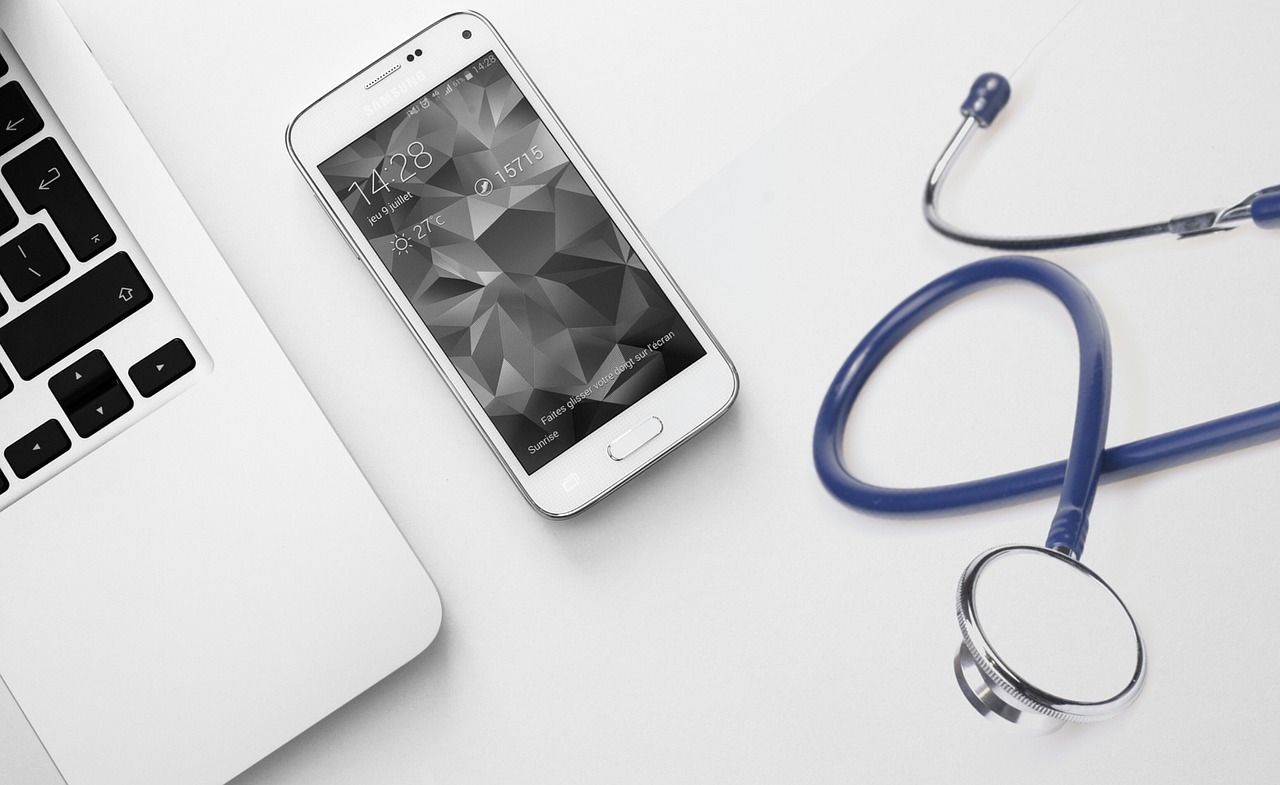
Treatment Optimization
In the realm of healthcare, the phrase "one size fits all" has become increasingly obsolete. With the advent of digital twins, we are stepping into an era where treatment optimization is not just a possibility but a reality. Imagine having a virtual counterpart of a patient, one that mirrors their unique biological makeup and health history. This is precisely what digital twins offer, enabling healthcare providers to simulate various treatment scenarios and assess their potential effectiveness before actual implementation.
By leveraging the power of digital twins, clinicians can create highly personalized treatment plans that are tailored to the individual needs of each patient. For instance, consider a patient diagnosed with diabetes. Using a digital twin, healthcare providers can run simulations to evaluate how different medications, dietary changes, and exercise regimens impact the patient's blood sugar levels over time. This allows for a more informed decision-making process, ensuring that the chosen treatment path is the most effective for that specific individual.
Moreover, the optimization process is not static. As a patient's condition evolves, their digital twin can be continuously updated with real-time data, allowing for dynamic adjustments to the treatment plan. This adaptability is crucial, particularly for chronic conditions where patient responses can change rapidly. The ability to visualize potential outcomes through simulations not only enhances patient safety but also boosts the overall efficacy of treatment protocols.
To illustrate the impact of treatment optimization through digital twins, consider the following case studies:
| Patient Condition | Digital Twin Application | Outcome |
|---|---|---|
| Heart Disease | Simulated medication response | Reduced hospital readmission by 30% |
| Cancer | Personalized chemotherapy regimen | Improved survival rates by 20% |
| Chronic Pain | Optimization of pain management strategies | Enhanced quality of life for 85% of patients |
These examples highlight how digital twins are not merely theoretical constructs; they are practical tools that can lead to substantial improvements in patient care. By enabling healthcare professionals to visualize and analyze treatment pathways, digital twins facilitate a more proactive approach to healthcare delivery. This means fewer trial-and-error treatments, reduced side effects, and a more engaged patient experience.
In summary, the optimization of treatment through digital twins is a game changer in the healthcare landscape. It empowers clinicians to make data-driven decisions, enhances patient outcomes, and sets the stage for a future where healthcare is not just reactive, but anticipatory and personalized.
- What are digital twins in healthcare? Digital twins are virtual replicas of patients that simulate their health conditions, allowing for personalized treatment planning and monitoring.
- How do digital twins improve treatment outcomes? They enable healthcare providers to visualize different treatment scenarios and adjust plans based on real-time data, leading to better patient outcomes.
- Are there any risks associated with using digital twins? While they offer significant benefits, concerns include data privacy and the accuracy of the simulations based on the data used.
- Can digital twins be used for all types of medical conditions? While they are particularly effective for chronic conditions, ongoing research is expanding their applicability across various medical fields.

Remote Monitoring and Telehealth
In the ever-evolving landscape of healthcare, remote monitoring and telehealth have emerged as game-changers, particularly with the integration of digital twins. Imagine being able to have a virtual version of yourself that continuously learns and adapts based on your health data. This is where digital twins come into play, allowing healthcare providers to monitor patients from afar, ensuring that care is both efficient and effective. With the rise of telehealth, patients can receive medical attention without stepping foot in a hospital, which is not only convenient but also vital in situations where physical visits may pose a risk.
Digital twins enhance remote monitoring by providing real-time insights into a patient's health status. For instance, consider a patient with chronic conditions like diabetes or heart disease. Their digital twin can continuously analyze data from wearable devices, such as glucose monitors or heart rate trackers. This data is then used to create a comprehensive picture of the patient’s health, enabling healthcare providers to make informed decisions quickly. The result? A proactive approach to healthcare that can prevent complications before they arise.
Moreover, the use of digital twins in telehealth allows for personalized care plans tailored to the individual needs of patients. By simulating different health scenarios, healthcare professionals can predict how a patient might respond to various treatments, ultimately leading to better outcomes. For example, if a doctor is considering a new medication for a patient, the digital twin can simulate the patient's response based on their unique health history. This not only saves time but also enhances the overall quality of care provided.
However, the implementation of remote monitoring and telehealth is not without its challenges. Data privacy is a significant concern, as sensitive health information must be protected from unauthorized access. Additionally, the integration of digital twins into existing healthcare systems can be complex, requiring significant investment in technology and training. Despite these challenges, the potential benefits of remote monitoring and telehealth are enormous, paving the way for a more connected and responsive healthcare system.
In summary, the fusion of digital twins with remote monitoring and telehealth is revolutionizing how healthcare is delivered. By leveraging real-time data and predictive analytics, healthcare providers can offer personalized care that not only meets the needs of patients but also anticipates potential health issues before they escalate. As technology continues to advance, the future of healthcare looks brighter than ever, with digital twins leading the charge.
- What are digital twins? Digital twins are virtual replicas of physical entities, used to simulate and analyze real-world behaviors and conditions.
- How do digital twins improve patient care? They enable personalized treatment plans by simulating individual health conditions, leading to better outcomes through real-time monitoring.
- What role do digital twins play in telehealth? Digital twins enhance telehealth by providing continuous monitoring and personalized care plans based on real-time data.
- Are there challenges associated with digital twins in healthcare? Yes, challenges include data privacy concerns and integration with existing healthcare systems.

Challenges and Limitations
While the potential of digital twins in healthcare is undeniably exciting, there are significant challenges and limitations that must be addressed before this technology can be fully integrated into everyday medical practices. One of the primary hurdles is data privacy. As healthcare providers utilize digital twins to create virtual models of patients, they inevitably handle vast amounts of sensitive personal data. This raises ethical concerns regarding how this information is collected, stored, and shared. The need for compliance with regulations such as HIPAA in the United States adds another layer of complexity, as any breach could lead to severe consequences for both patients and healthcare institutions.
Moreover, the integration of digital twins into existing healthcare systems can be quite complex. Many healthcare facilities rely on legacy systems that may not be compatible with the advanced technologies required for digital twin implementation. This can lead to significant technical hurdles, including issues related to data interoperability and system compatibility. It's essential for healthcare organizations to invest in upgrading their infrastructure and training personnel, which can be both time-consuming and costly.
Another limitation is the standardization of protocols for creating and using digital twins. As it stands, there is no universally accepted framework for how digital twins should be developed and implemented in healthcare. This lack of standardization can result in variations in data quality and outcomes, making it challenging for providers to compare results or share insights across different platforms. To overcome this, the healthcare industry must work collaboratively to establish best practices and standardized protocols.
In summary, while digital twins hold immense promise for transforming healthcare, it is crucial to address these challenges proactively. By focusing on data privacy, system integration, and standardization, the industry can pave the way for a future where digital twins enhance patient care and improve healthcare outcomes.
- What are digital twins in healthcare?
Digital twins in healthcare are virtual replicas of patients that allow for real-time monitoring, predictive analytics, and personalized treatment plans. - How do digital twins improve patient care?
They enhance patient care by simulating individual health conditions, enabling healthcare providers to tailor treatment plans and predict potential health issues. - What are the main challenges of using digital twins?
The main challenges include data privacy concerns, integration with existing systems, and the need for standardized protocols. - How can data privacy be maintained with digital twins?
Healthcare organizations must comply with regulations like HIPAA and implement robust data security measures to protect patient information.

Data Privacy Concerns
In the rapidly evolving landscape of healthcare technology, have emerged as a critical issue, especially with the integration of digital twins. These virtual replicas of patients not only provide invaluable insights into individual health conditions but also raise significant questions about how sensitive data is collected, stored, and utilized. The very essence of digital twins relies on vast amounts of personal health information, which can include everything from genetic data to real-time health metrics. This reliance on data creates a dual-edged sword: while it can lead to groundbreaking advancements in personalized care, it also places patient privacy at risk.
One of the primary challenges is ensuring that patient data remains confidential and secure. Healthcare providers must navigate a complex landscape of regulations, such as the Health Insurance Portability and Accountability Act (HIPAA) in the United States, which mandates strict guidelines on patient data handling. However, as digital twins become more prevalent, the question arises: Are existing regulations sufficient to protect patients in this new digital era? The answer is not straightforward. The dynamic nature of digital twins means that traditional data protection methods may not adequately address the unique risks involved.
Moreover, the potential for data breaches is a looming threat. Cyberattacks targeting healthcare systems have become increasingly common, and the consequences can be devastating. A breach could expose sensitive health information, leading to identity theft or misuse of data. To combat these risks, healthcare organizations must implement robust cybersecurity measures, which include:
- Advanced encryption techniques to safeguard data transmission.
- Regular security audits to identify and rectify vulnerabilities.
- Employee training programs to raise awareness about data privacy.
Additionally, the ethical implications of using digital twins cannot be overlooked. Patients must be informed about how their data will be used and have the right to consent to its usage. Transparency is key in building trust between patients and healthcare providers. As technology advances, it’s essential that healthcare organizations prioritize ethical considerations alongside technological innovation.
In conclusion, while digital twins hold tremendous potential for improving patient care, the associated with their use cannot be ignored. It is imperative for healthcare providers to adopt comprehensive data protection strategies, adhere to regulatory standards, and foster an environment of transparency and trust. Only then can we harness the full power of digital twins while safeguarding patient privacy.
- What are digital twins in healthcare?
Digital twins are virtual representations of patients that use real-time data to simulate health conditions and predict outcomes. - How do digital twins improve patient care?
By providing personalized treatment plans and real-time monitoring, digital twins enhance patient outcomes through predictive analytics. - What are the main data privacy concerns with digital twins?
The main concerns include the risk of data breaches, compliance with regulations, and ensuring patient consent for data usage. - How can healthcare organizations protect patient data?
Organizations can implement encryption, conduct regular security audits, and provide employee training on data privacy.
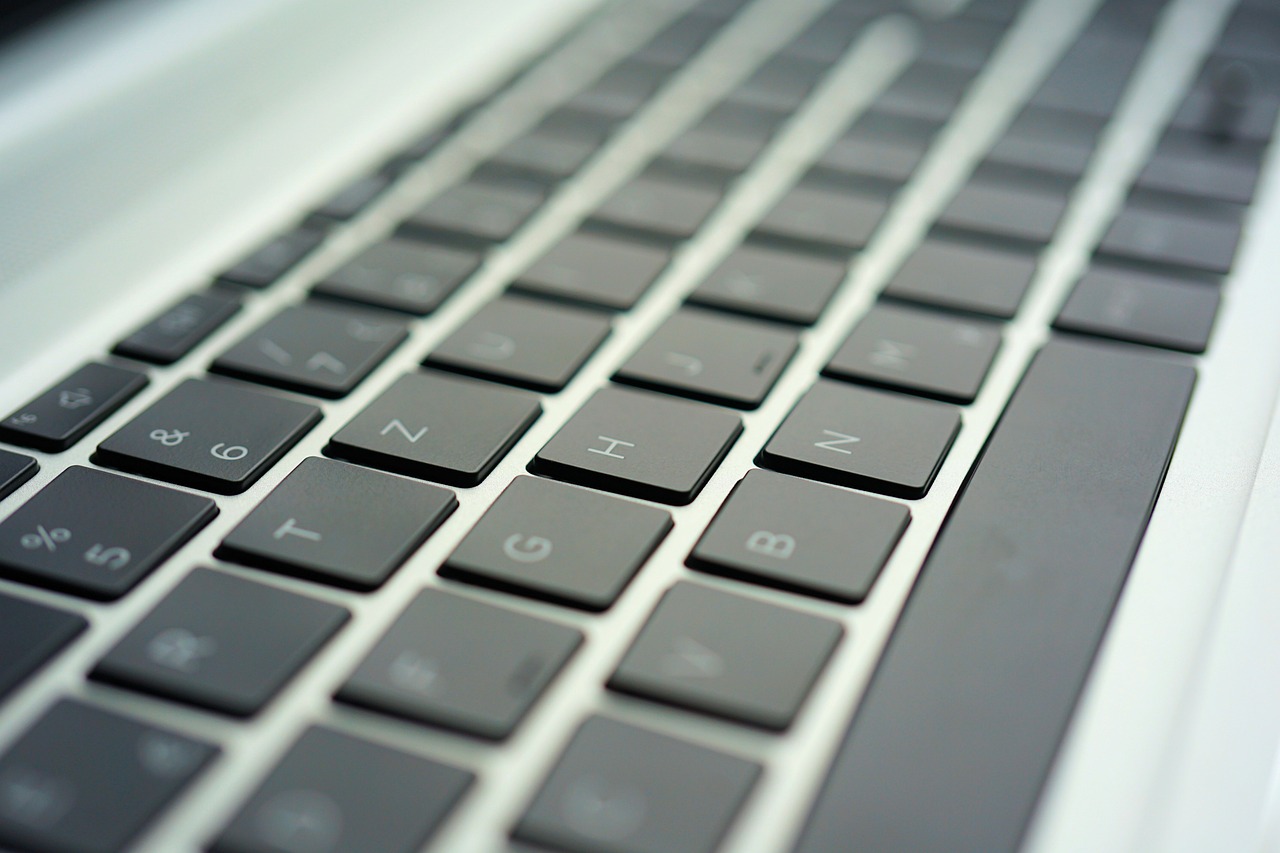
Integration with Existing Systems
Integrating digital twins into existing healthcare systems is akin to fitting a new piece into a complex puzzle. It's not just about adding new technology; it's about ensuring that this technology works harmoniously with what’s already in place. The healthcare sector has invested heavily in various information systems, from electronic health records (EHR) to laboratory information systems (LIS). Therefore, the challenge lies in creating a seamless interface that allows digital twins to communicate effectively with these systems.
One of the primary hurdles in this integration process is the diversity of platforms used across healthcare facilities. Each institution may utilize different software solutions, leading to compatibility issues. For instance, if a hospital employs a specific EHR system that doesn’t support digital twin technologies, it can create significant roadblocks. To overcome these challenges, healthcare providers must focus on developing standardized protocols and APIs (Application Programming Interfaces) that facilitate data exchange between systems.
Moreover, the integration process requires a thorough understanding of the existing workflows within healthcare settings. It’s essential to identify how digital twins can enhance these workflows without disrupting them. This means involving stakeholders from various departments—such as IT, clinical staff, and management—in the planning stages to ensure that the integration aligns with the overall goals of the healthcare facility.
Another critical aspect to consider is the training and adaptation of healthcare professionals. As digital twins introduce new functionalities, staff must be adequately trained to utilize these tools effectively. This may involve workshops, online training modules, and ongoing support to ensure that all personnel are comfortable with the new technology. The goal is to create an environment where digital twins are not seen as an additional burden but rather as a valuable asset that enhances patient care.
In conclusion, while integrating digital twins into existing healthcare systems poses challenges, it also presents an incredible opportunity to enhance patient outcomes. By addressing compatibility issues, understanding workflows, and providing adequate training, healthcare providers can pave the way for a future where digital twins play a vital role in personalized medicine and proactive healthcare delivery.
- What are digital twins in healthcare?
Digital twins are virtual representations of physical entities, such as patients or medical devices, that allow for real-time monitoring and simulation of health conditions. - How do digital twins improve patient care?
They enable personalized treatment plans and predictive analytics, allowing healthcare providers to anticipate health issues and tailor interventions accordingly. - What challenges exist in integrating digital twins?
Challenges include data privacy concerns, compatibility with existing systems, and the need for standardized protocols across healthcare platforms. - How can healthcare professionals be trained on digital twins?
Training can involve workshops, online courses, and continuous support to ensure staff are equipped to use digital twin technologies effectively.
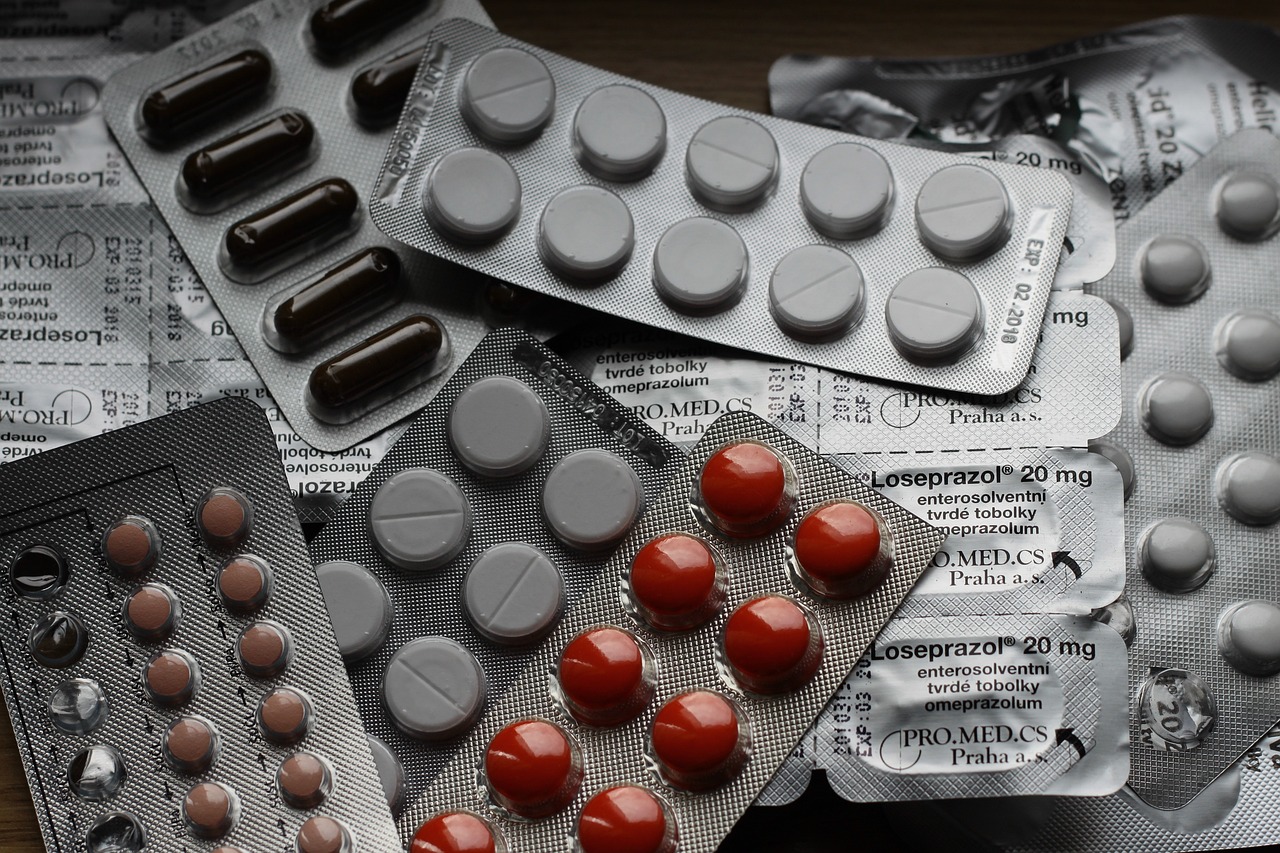
Future Trends in Digital Twins
The future of digital twins in healthcare is not just bright; it’s positively dazzling. As technology advances at breakneck speed, the integration of digital twins with cutting-edge innovations like artificial intelligence (AI) and machine learning (ML) is set to redefine how we approach patient care. Imagine a world where healthcare is not just reactive but proactive, where doctors can foresee health issues before they arise, thanks to the predictive capabilities of digital twins. This isn’t science fiction; it’s the future of medicine, and it’s unfolding right before our eyes.
One of the most exciting trends is the personalized medicine revolution. Digital twins will allow healthcare providers to create tailored treatment plans for individual patients by simulating their unique health profiles. This means that rather than a one-size-fits-all approach, treatments can be customized based on a patient’s specific genetic makeup, lifestyle, and health history. For instance, a digital twin could simulate how a patient’s body would respond to a particular medication, allowing doctors to choose the most effective treatment with minimal side effects.
Moreover, the integration of AI and ML with digital twins is expected to enhance their predictive capabilities. By analyzing vast amounts of data from numerous sources, these technologies can identify patterns that may not be immediately obvious to human practitioners. For example, AI algorithms can analyze data from a patient’s digital twin to predict potential complications during recovery from surgery, enabling healthcare teams to intervene early and adjust care plans accordingly. This level of foresight not only improves patient outcomes but also optimizes resource allocation within healthcare systems.
Additionally, as we look toward the future, we can expect to see an increase in the use of digital twins for remote monitoring and telehealth. With the rise of wearable technology, patients can continuously feed data into their digital twins, creating a real-time snapshot of their health. This constant stream of information can empower healthcare providers to make informed decisions without the need for in-person visits. The implications for chronic disease management are particularly significant, as patients can receive timely interventions based on their digital twin’s simulated health status.
However, as we embrace these advancements, it’s essential to remain aware of the ethical considerations surrounding digital twins. Issues like data privacy and security will need to be addressed to gain patient trust and ensure compliance with regulations. Healthcare organizations must develop robust frameworks that protect sensitive patient information while leveraging the benefits of digital twins. The future of digital twins in healthcare is not just about technology; it’s also about building a foundation of trust and ethical responsibility.
In summary, the future of digital twins in healthcare is poised for a remarkable transformation, driven by innovations in AI, machine learning, and personalized medicine. As these technologies evolve, they will empower healthcare providers to deliver more effective, tailored care to patients, ultimately leading to better health outcomes and a more efficient healthcare system.
- What are digital twins in healthcare?
Digital twins are virtual replicas of patients or healthcare processes that can simulate health conditions, enabling personalized treatment and better patient outcomes. - How can digital twins improve patient care?
They enhance patient care by allowing for real-time monitoring, predictive analytics, and tailored treatment plans based on individual health profiles. - What challenges do digital twins face in healthcare?
Challenges include data privacy concerns, integration with existing systems, and the need for standardized protocols to ensure effective implementation. - What is the role of AI in digital twins?
AI enhances the predictive capabilities of digital twins by analyzing large datasets to identify patterns and foresee potential health issues. - Will digital twins replace doctors?
No, digital twins are designed to assist healthcare providers, not replace them. They provide valuable insights that can enhance clinical decision-making.
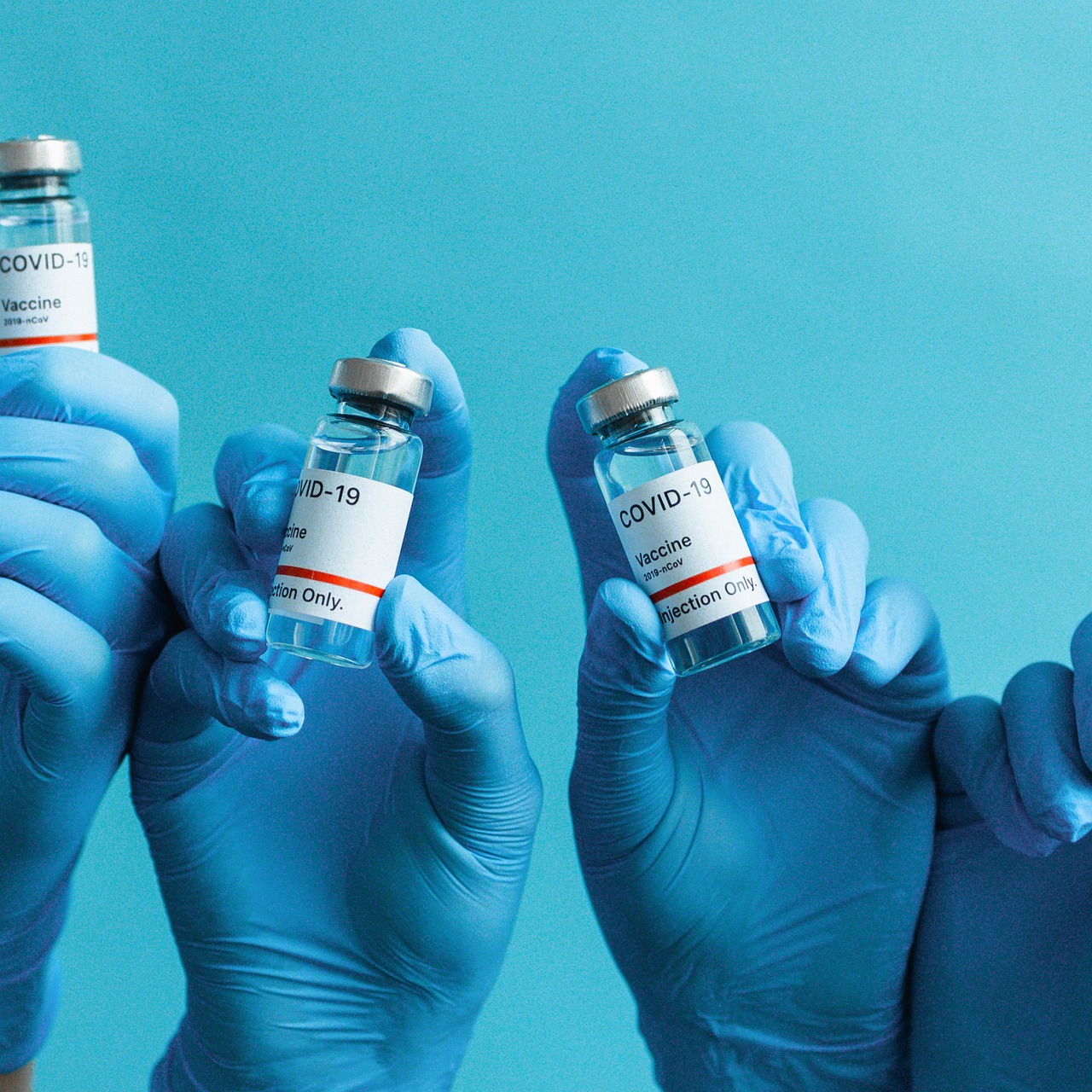
AI and Machine Learning Integration
The integration of Artificial Intelligence (AI) and Machine Learning (ML) with digital twins in healthcare is not just a trend; it’s a game-changer. Imagine having a virtual model of a patient that evolves with their health data, learning and adapting in real-time. This is the essence of AI and ML working hand-in-hand with digital twins, creating a dynamic environment where healthcare providers can make informed decisions based on predictive analytics. By harnessing the power of these technologies, we can anticipate health issues before they become critical, leading to proactive healthcare that saves lives.
AI algorithms analyze vast amounts of data collected from various sources, including electronic health records, wearable devices, and genetic information. This data is then used to create a digital twin that mirrors a patient’s health status. For instance, if a patient has a chronic condition like diabetes, their digital twin can simulate how different lifestyle changes or medications might affect their blood sugar levels. This allows healthcare professionals to tailor interventions that are not only effective but also personalized to the unique needs of each patient.
Moreover, the predictive capabilities of AI and ML enable healthcare providers to identify potential health risks before they manifest. For example, by analyzing patterns in a patient's data over time, clinicians can foresee complications, such as heart failure or severe infections, and intervene early. This proactive approach is a significant shift from traditional reactive healthcare, where problems are often addressed only after they arise.
To illustrate the impact of AI and ML integration, consider the following table that summarizes key benefits:
| Benefit | Description |
|---|---|
| Enhanced Predictive Analytics | AI algorithms analyze historical data to forecast future health issues. |
| Personalized Treatment Plans | Digital twins allow for customized interventions based on individual health profiles. |
| Improved Patient Engagement | Patients can interact with their digital twins, gaining insights into their health. |
| Resource Optimization | Healthcare providers can allocate resources more efficiently based on predictive models. |
As we look to the future, the potential for AI and ML to enhance the capabilities of digital twins in healthcare is enormous. Imagine a world where your digital twin not only tracks your health but also suggests lifestyle changes, medication adjustments, and even alerts your physician in real-time if something seems off. This level of integration could lead to a healthcare revolution, where patient outcomes improve dramatically, and healthcare delivery becomes more efficient and effective.
In conclusion, the integration of AI and machine learning with digital twins represents a frontier in healthcare that is ripe for exploration. It’s an exciting time for both patients and healthcare providers as we stand on the brink of a new era in personalized medicine, where technology and human expertise converge to create a healthier future for all.
- What are digital twins? Digital twins are virtual replicas of physical entities, allowing for real-time monitoring and simulation of health conditions.
- How does AI improve digital twins? AI enhances digital twins by analyzing large datasets to predict health outcomes and personalize treatment plans.
- What are the benefits of using digital twins in healthcare? They offer improved predictive analytics, personalized treatment plans, and enhanced patient engagement.
- Are there any challenges with digital twins? Yes, challenges include data privacy concerns and the complexity of integrating with existing healthcare systems.

Personalized Medicine Revolution
The concept of personalized medicine is not just a buzzword; it represents a fundamental shift in how healthcare is delivered. Imagine a world where your treatment plan is as unique as your DNA. That's the promise of digital twins in personalized medicine. These virtual replicas enable healthcare providers to tailor treatments specifically to individual patients by simulating how different therapies might affect them based on their unique biological makeup. This is akin to having a personal coach who knows exactly what workout will get you in shape, rather than a one-size-fits-all regimen.
Digital twins can analyze vast amounts of patient data, including genetic information, lifestyle choices, and historical health records, to create a comprehensive profile of an individual. This profile allows for the development of highly customized treatment plans. For instance, a digital twin can predict how a patient with a specific genetic mutation might respond to a particular medication, enabling doctors to choose the most effective treatment from the get-go. This not only enhances the chances of a successful outcome but also minimizes the risk of adverse reactions, which is crucial in fields like oncology where treatments can be particularly harsh.
Moreover, the integration of digital twins in personalized medicine can lead to significant cost savings in the long run. By optimizing treatment plans and reducing trial-and-error approaches, healthcare providers can decrease the number of ineffective treatments and hospitalizations. This is especially important in an era where healthcare costs are skyrocketing, and both patients and providers are seeking more efficient solutions. The table below illustrates the potential benefits of implementing digital twins in personalized medicine:
| Benefit | Description |
|---|---|
| Improved Patient Outcomes | Customized treatment plans lead to higher success rates and better health management. |
| Cost Efficiency | Reduction in unnecessary treatments and hospitalizations saves money. |
| Enhanced Drug Development | Simulating drug interactions in virtual twins speeds up the research and approval process. |
| Proactive Health Management | Continuous monitoring allows for timely interventions before issues escalate. |
As we look to the future, the integration of artificial intelligence and machine learning with digital twins will further enhance their capabilities. Imagine algorithms that continuously learn from patient data, refining treatment recommendations in real-time. This could create a dynamic healthcare environment where treatments are not static but evolve as new data is gathered. It's a revolutionary leap that not only positions patients at the center of their healthcare journey but also empowers healthcare providers with the tools they need to deliver the best possible care.
In conclusion, the personalized medicine revolution, fueled by digital twins, is set to transform healthcare as we know it. By leveraging technology to create individualized treatment plans, we can usher in a new era of medicine that prioritizes patient uniqueness and promotes better health outcomes. Are we ready to embrace this change? The answer seems to be a resounding yes, as both patients and providers recognize the immense potential this technology holds.
- What are digital twins? Digital twins are virtual replicas of physical entities that simulate real-world conditions, allowing for personalized treatment plans in healthcare.
- How do digital twins enhance personalized medicine? They analyze individual patient data to tailor treatments, improving outcomes and minimizing adverse reactions.
- What are the cost benefits of using digital twins? They can reduce unnecessary treatments and hospitalizations, leading to significant cost savings in healthcare.
- Will digital twins replace traditional healthcare practices? While they won't replace traditional methods, they will enhance and complement them by providing more personalized care.
Frequently Asked Questions
- What are digital twins in healthcare?
Digital twins are virtual replicas of physical entities, including patients and their health conditions. They use real-time data to simulate and predict health outcomes, enabling personalized treatment plans and better patient care.
- How do digital twins enhance patient care?
Digital twins enhance patient care by providing a comprehensive view of an individual's health. They allow healthcare providers to simulate various treatment scenarios, monitor patient conditions in real-time, and tailor interventions based on predictive analytics.
- What role does predictive analytics play in digital twins?
Predictive analytics in digital twins helps healthcare providers foresee potential health issues by analyzing patient data. This foresight enables proactive interventions, improving patient outcomes and optimizing resource allocation.
- Are there any challenges associated with digital twins?
Yes, digital twins face several challenges, including data privacy concerns, integration with existing healthcare systems, and the need for standardized protocols. Addressing these challenges is crucial for their successful implementation in medical practices.
- How do digital twins address data privacy concerns?
Maintaining patient confidentiality is vital when using digital twins. Healthcare providers must comply with ethical guidelines and regulatory standards to ensure that patient data is protected while still allowing for effective use of digital twin technology.
- What future trends are expected for digital twins in healthcare?
The future of digital twins in healthcare looks promising, with trends such as the integration of AI and machine learning. These advancements can enhance predictive capabilities and revolutionize personalized medicine, leading to more effective treatment plans tailored to individual needs.
- Can digital twins be used in telehealth?
Absolutely! Digital twins play a significant role in telehealth by enhancing remote patient monitoring systems. They enable healthcare providers to deliver efficient and effective care from a distance, ensuring that patients receive timely interventions.
- What is the impact of AI on digital twins?
Integrating AI with digital twins enhances their predictive capabilities, allowing for more accurate simulations of health outcomes. This combination can lead to improved patient outcomes and greater operational efficiency in healthcare delivery.

